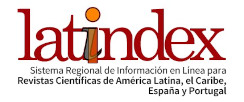THE NEW RAILWAY ROAD: A PERSPECTIVE FOR THE DEVELOPMENT OF WESTERN PARANÁ-BRAZIL
DOI:
https://doi.org/10.54399/rbgdr.v18i3.6800Keywords:
Análise Espacial, Agrupamento hierárquico, Estimador de densidade de Kernel, Indicadores econômicos, Modais de transporteAbstract
The objective of this work was to analyze the economic impacts of the New Route of the Ferroeste and its associations between the municipalities of the West of the state of Paraná, through the analysis of spatial data of agricultural production and economic indicators from the years 2018 to 2020. The method used was Moran's global and local spatial autocorrelation index technique, Kernel density estimator with a distance of 150 km. For cluster analysis, the hierarchical full linkage method was used. There were similar regions of agricultural production. Significant spatial autocorrelation was observed for milk production, swine production, cattle production, corn and soybean productions. For the distance of 150 km, the result showed that its influence could benefit the municipalities of the West, favoring the generation of employment and income. By the cluster analysis, it was found that the central group presents the Cascavel-Paraná transshipment municipality that is in operation and the municipalities with similar characteristics to the same and mostly grouped municipalities with high potential of gross value of agricultural production and agricultural production.
Downloads
Published
How to Cite
Issue
Section
License
Copyright (c) 2022 Revista Brasileira de Gestão e Desenvolvimento Regional

This work is licensed under a Creative Commons Attribution-NonCommercial 4.0 International License.
Authors who have their papers accepted and published in the Brazilian Journal of Regional Management and Development must agree to the copyright policy CC BY https://creativecommons.org/licenses/by/4.0/.
If the article is accepted for publication, the copyright is automatically assigned to the Brazilian Journal of Regional Management and Development.

















